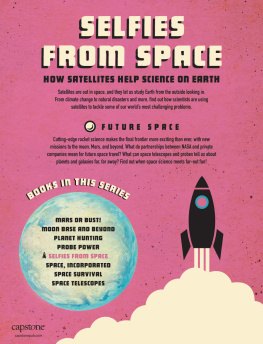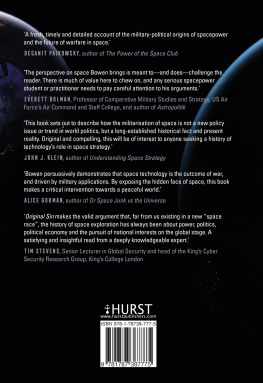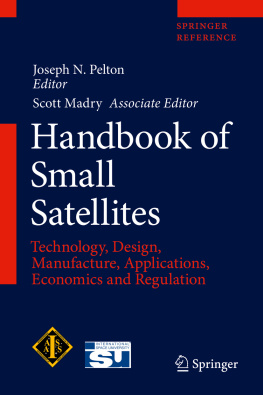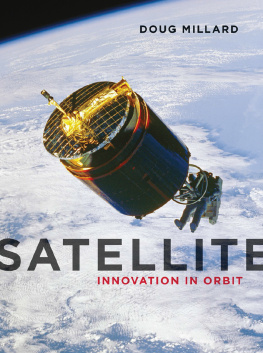ROUTLEDGE LIBRARY EDITIONS: COLD WAR SECURITY STUDIES
Volume 34
OUTER SPACE BATTLEFIELD OF THE FUTURE?
First published in 1978 by Taylor & Francis Ltd
This edition first published in 2021
by Routledge
2 Park Square, Milton Park, Abingdon, Oxon OX14 4RN
and by Routledge
52 Vanderbilt Avenue, New York, NY 10017
Routledge is an imprint of the Taylor & Francis Group, an informa business
1978 SIPRI (Stockholm International Peace Research Institute)
All rights reserved. No part of this book may be reprinted or reproduced or utilised in any form or by any electronic, mechanical, or other means, now known or hereafter invented, including photocopying and recording, or in any information storage or retrieval system, without permission in writing from the publishers.
Trademark notice: Product or corporate names may be trademarks or registered trademarks, and are used only for identification and explanation without intent to infringe.
British Library Cataloguing in Publication Data
A catalogue record for this book is available from the British Library
ISBN: 978-0-367-56630-2 (Set)
ISBN: 978-1-00-312438-2 (Set) (ebk)
ISBN: 978-0-367-62761-4 (Volume 34) (hbk)
ISBN: 978-1-00-311069-9 (Volume 34) (ebk)
Publishers Note
The publisher has gone to great lengths to ensure the quality of this reprint but points out that some imperfections in the original copies may be apparent.
Disclaimer
The publisher has made every effort to trace copyright holders and would welcome correspondence from those they have been unable to trace.
Outer Space Battlefield of the Future?
sipri
Stockholm International Peace Research Institute
First published 1978 by Taylor & Francis Ltd
1014 Macklin St, London WC2B 5NF
Copyright 1978 by SIPRI
Sveavagen 166, S-113 46 Stockholm
All rights reserved. No part of this publication may be reproduced, stored in a retrieval system or transmitted, in any form or by any means, electronic, mechanical, photocopying, recording or otherwise, without the prior permission of the copyright owner.
Distributed in the United States of America by
Crane, Russak & Company, Inc.
347 Madison Avenue, New York, N.Y. 10017
and in Scandinavia by
Almqvist & Wiksell International,
26 Gamla Brogatan,
S-101 20 Stockholm, Sweden
ISBN 0 85066 130 7
Printed and bound in the United Kingdom by
Taylor & Francis (Printers) Ltd, Rankine Road,
Basingstoke, Hampshire RG24 OPR
Preface
Publicity about satellites, and about space activities in general, normally focuses on their peaceful applications. Consequently, there is little public debate about the military use of space, in spite of the fact that about 60 per cent of US and Soviet satellites are military ones. Since the space age began, 1386 military satellites are known to have been launched by end-1976 563 by the USA, 899 by the USSR, 5 by the USA for the UK, 3 by the USA for France and 5 by France itself, 2 by China, and 4 by the USA for NATO.
Satellites for military communications over both short and long distances, for weather prediction, and for accurate navigation are among the types used by the military. Other important types are photographic and electronic reconnaissance satellites to identify all sorts of military targets, satellites to position military targets accurately, satellites to give early warning of the launching of enemy missiles, and those capable of intercepting and destroying orbiting enemy satellites.
Up to the end of 1976 the USA had spent about $30000 million on its military space activities, about one-third of the total sum spent on space. The cost of the Soviet military space programme is kept secret, but the magnitude of the effort is similar to that of the USA.
China, France, the UK and NATO also operate military satellites. The exact purpose of the Chinese satellites is not known, but photographic reconnaissance is probably included.
Considerable efforts are currently being made to increase the survivability in war of military satellites. Research into, for example, protection of orbiting satellites against nuclear attack from a hostile satellite is actively under way. Also under investigation are detection systems for early warning of satellite attacks, based on the surveillance of space by ground- and space-based sensors.
In the long term, the most revolutionary military technological development may turn out to be the use of navigational and geodetic satellites to guide missiles on to their targets. There is no reason why CEPs of a few metres over intercontinental ranges should not be obtained by these means. Moreover, the space-based navigation system of one country may be used by others for military purposes. This, coupled with the almost inevitable proliferation of, for example, cruise missile technology, is an extremely worrying prospect.
The other side of the coin is the useful role of satellites in verifying, by national technical means, some arms control agreements.
For these reasons, availability of information about the military use of space is important. We hope that this book will provide such information for those working for the control of military activity in space.
This book was written by Dr. Bhupendra M. Jasani, a research fellow at SIPRI.
December 1977
Frank Barnaby
Director
Contents
Chapter 2. Some basic concepts of orbital characteristics
I. Orbital dynamics
II. Orbital perturbations
Effects of the Earths rotation Relativistic effects Effects due to the asymmetry of the Earth Gravitational effects of the Sun and Moon Effects due to the Earths atmosphere Effects of magnetic drag Effects of solar-radiation pressure
Chapter 3. Reconnaissance satellites
I. Photographic reconnaissance satellites
Satellite ground tracks Satellite orbits Space photography The US programme The Soviet programme The Chinese programme The French programme
II. Electronic reconnaissance satellites
Satellite orbits The US programme The Soviet programme
III. Ocean-surveillance satellites
The US programme The Soviet programme
IV. Early-warning satellites
Satellite orbits The US programme The Soviet programme
V. Nuclear-explosion detection satellites
The US programme The Soviet programme
Appendix 3A. Tables of photographic reconnaissance satellites
Appendix 3B. Tables of electronic reconnaissance satellites
Appendix 3C. Tables of ocean-surveillance satellites
Appendix 3D. Tables of early-warning satellites
Chapter 4. Communications satellites
I. Satellite orbits
II. Satellite transponder characteristics
III. The US programme
IV. The Soviet programme
V. The British programme
VI. The NATO programme
VII. The French programme
Appendix 4A. Tables of communications satellites
Chapter 5. Navigation satellites











